56 have author last names that start with A have author last names that start with A

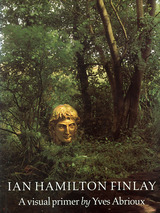
"Ian Hamilton Finlay is one of the most diversely and richly talented visual artists living today ... This very handsomely produced book describes and illustrates [his] whole artistic career"—The World of Interiors
"This well-selected and finely printed presentation – much of it in colour – of poems, short stories, and photographs of non-printed materials is by far the fullest, most attractive and most persuasive account given to date of Finlay's many-faceted achievement"—The Times Literary Supplement
"It is good to see as intelligent a book as this being combined with a format which does its subject the honour due to him, but above all, this is a book which sets out to help the reader to understand an artist who requires thoughtful, unbiased contemplation"—Books in Scotland

The English Actor charts the uniquely English approach to stagecraft, from the medieval period to the present day. In thirty chapters, Peter Ackroyd describes, with superb narrative skill, the genesis of acting—deriving from the Church tradition of Mystery Plays—through the flourishing of the craft in the Renaissance, to modern methods following the advent of film and television. Across centuries and media, The English Actor also explores the biographies of the most notable and celebrated British actors. From the first woman actor on the English stage, Margaret Hughes, who played Desdemona in 1660; to luminaries like Laurence Olivier, Peter O’Toole, Maggie Smith, Judi Dench, and Helen Mirren; to contemporary multihyphenates like Gary Oldman, Kenneth Branagh, Sophie Okonedo, and Chiwetel Ejiofor, Ackroyd gives all fans of the theater an original and superbly entertaining appraisal of how actors have acted, how audiences have responded, and what we mean by the magic of the stage.
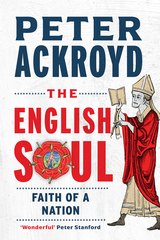
This book portrays the spirit and nature of English Christianity, as it has developed over the last fourteen hundred years. During this time, Christianity has been the predominant faith of the people and the reflection of the English soul. This fascinating new history is an account of the Christian English soul, which recognizes the fact that Christianity has been the anchoring and defining doctrine of England while accepting respectfully that other powerful and significant faiths have influenced the religious sensibility of this nation. Peter Ackroyd surveys the lives and faith of the most important figures of English Christianity from the Venerable Bede to C. S. Lewis, exploring the mysticism of Julian of Norwich and William Blake; the tumultuous years of the Reformation; the emergence of the English bible; the evangelical tradition, including John Wesley; and the contemporary contest between tradition, revival, and atheism. This is an essential, comprehensive, and accessible survey of English Christianity.

Jan van Eyck (1390–1441) was one of the most inventive and influential artists in the entire European tradition. The realism of his paintings continues to astound observers more than six centuries on, even though our world is saturated by high-resolution images. However, viewers today are as like to be absorbed by Van Eyck’s personality as his realism. While he sometimes directly painted himself into his works, he also suggested his presence through an array of inscriptions, signatures, and even a personal motto. Incorporating a wealth of new research and recent discoveries within a fresh exploration of the paintings themselves, this book reveals how profoundly Jan van Eyck transformed the very idea of what an artist could be.

During the 1890s, British women for the first time began to leave their family homes to seek work, accommodation, and financial and sexual freedom. Decadent Women is an account of some of these women who wrote for the innovative art and literary journal The Yellow Book. For the first time, and drawing on original research, Jad Adams describes the lives and work of these vibrant and passionate women, from well-connected and fashionable aristocrats to the desperately poor. He narrates the challenges they faced in a literary marketplace, and within a society that overwhelmingly favored men, showing how they were pioneers of a new style, living lives of lurid adventure and romance, as well as experiencing poverty, squalor, disease, and unwanted pregnancy.

Adey examines how humans have managed and manipulated air as a natural resource and, in doing so, have been taken to the limits of survival, brought to high-altitude mountain peaks, subterranean worlds, and the troughs of new moral depths. Going beyond how vital air has been to our philosophical, scientific, and technological pursuits, he also reveals the way that the artistic and literary imagination has been lifted through air and how, in air, cultures have learned to express and inspire each other. Combining established figures such as Joseph Priestley, John Scott Haldane, and Marie Curie with unlikely individuals from painting, literature, and poetry, this richly illustrated book unlocks new perspectives into the science and culture of this pervasive but unnoticed substance.
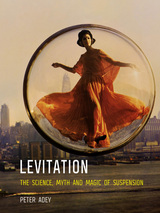
As Adey argues, levitation is best thought of as a pre- or parallel pursuit to that of aviation—but one that doesn’t cheat by employing aeronautical machinery. As he shows, many people have been certain that it is absolutely possible to float unaided. Early modern scientists believed in the force of levity as an opposite to that of gravity. Many traditional societies have deep-rooted shamanic traditions of spirit and dream flight. And many ancient religions have age-old accounts of ascetic saints hovering in sublime ecstasy. In more recent times, magicians and mesmerists have wowed audiences by seeming to float by the powers of thought alone. Science-fiction writers and urban planners alike have countless designs of floating cities hovering high above the earth, and even artists have experimented with levitation to find new forms of expression—one need just think of Yves Klein’s “Leap into the Void.”
Touching upon these and many other examples, Adey demonstrates how significant this magical act has been in our cultural, scientific, and spiritual lives. From poetry to philosophy to technology to even law, he lifts up levitation as a fascinating wonder in our shared imaginations.
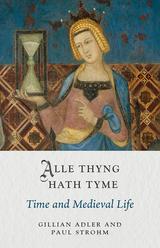
Alle Thyng Hath Tyme recreates medieval people’s experience of time as continuous, discontinuous, linear, and cyclical—from creation through judgment and into eternity. Medieval people measured time by natural phenomena such as sunrise and sunset, the motion of the stars, or the progress of the seasons, even as the late-medieval invention of the mechanical clock made time-reckoning more precise. Negotiating these mixed and competing systems, Gillian Adler and Paul Strohm show how medieval people gained a nuanced and expansive sense of time that rewards attention today.


Tracking these fruits and seeds through cultivation, harvesting, processing, and consumption—or non-consumption, in the case of those with nut allergies—award-winning food writer Ken Albala provides a fascinating account on how they have been cooked, prepared, and exploited. He reveals the social and cultural meaning of nuts during various periods in history, while also immersing us in their modern uses. Packing scrumptious recipes, surprising facts, and fascinating nuggets inside its hardcover shell, this entertaining and informative book will delight lovers of almonds, hazelnuts, chestnuts, and more.

Pancake traverses over centuries and civilizations to examine the culinary and cultural importance of pancakes in human history. From the Russian blini to the Ethiopian injera, Albala reveals how pancakes have been a perennial source of sustenance from Greek and Roman eras to the Middle Ages through to the present day. He explores how the pancake has gained symbolic currency in diverse societies as a comfort food, a portable victual for travelers, a celebratory dish, and a breakfast meal. The book also features a number of historic and modern recipes—tracing the first official pancake recipe to a sixteenth-century Dutch cook—and is accompanied by a rich selection of illustrations.
Pancake is a witty and erudite history of a well-known favorite and will ensure that the pancake will never be flattened under the shadow of better known foods.
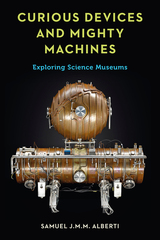
Science museums have paradoxes at their core. They must be accessible and fun while representing increasingly complex science. They must be both historic and contemporary. Their exhibits attract millions, but most of their objects remain in deep storage, seldom seen. This book delves into these conflicts, revealing the secret lives of science curators; where science objects come from and who uses them; and, ultimately, what science museums are for. With an insider’s eye, Samuel J. M. M. Alberti exposes the idiosyncratic past and intriguing current practices of these institutions—and sets out a map for their future.

After early incarnations as a nineteenth-century steam-powered bicycle and multi-wheeled vehicles, the modern motorcycle came into its own as a cheap, mobile military asset during World War I. From there, it rapidly spread through modern culture as a symbol of rebellion and subversive power, and Motorcycle tracks the symbolic role that the bike has played in literature, art, and film. The authors also investigate the international subcultures that revolve around the motorcycle and scooter. They chart the emergence of American biker culture in the 1950s, when decommissioned fighter pilots sought new ways to satiate their desire for thrill and danger, and explore how the motorcycle came to represent the untamed nonconformity of the American West. In contrast, smaller scooters such as the Vespa and moped became the utilitarian vehicle of choice in space-starved metropolises across Europe and Asia. Ultimately, the authors argue, the motorbike is the exemplary Modernist object, dependent on the perfect balance of man and machine.
An unprecedented and wholly engrossing account, Motorcycle is an essential reading for the Harley-Davidson roadhog, bike collector, or anyone who’s felt the power of the unmistakable king of the road.
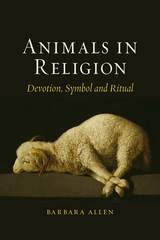
Some of the figures here will be familiar, such as St. Francis of Assisi, famous for his accord with animals, or that beloved remover of obstacles, Ganesha, the popular elephant god in the Hindu pantheon. Delving deeper, Allen highlights the numerous ways that our religious practices have honored and relied upon our animal brethren. She examines the principle of ahimsa, or nonviolence, which has Jains sweeping the pathways before them so as not to kill any insects, as well as the similar principle in Judaism of ts’ar ba’alei chayim and the notion in some sects of Islam that all living creatures are Muslim. From ancient Egypt to the Druids to the indigenous cultures of North America and Australia, Allen tells story after story that emphasizes the same message: all species are spiritually connected.

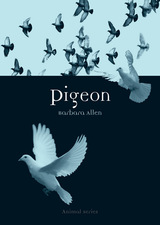
Our frequent urban companion, cooing in the eaves of train stations or scavenging underfoot for breadcrumbs and discarded French fries, the pigeon has many detractors—and even some fans. Written out of love for and fascination with this humble yet important bird, Barbara Allen’s Pigeon explores its cultural significance, as well as its similarities to and differences from its close counterpart, the dove. While the dove is seen as a symbol of love, peace, and goodwill, the pigeon is commonly perceived as a filthy, ill-mannered flying rodent, a “rat with wings.”
Readers will find in Pigeon an enticing exploration of the historical and contemporary bonds between humans and these two unique and closely related birds. For polluting statues and architecture, the pigeon has earned a bad reputation, but Barbara Allen offers several examples of the bird’s importance—as a source of food and fertilizer, a bearer of messages during times of war, a pollution monitor, and an aid to Charles Darwin in his pivotal research on evolutionary theory. Allen also comments on the literary love and celebration of pigeons and doves in the work of such writers and poets as Shakespeare, Dickens, Beatrix Potter, Proust, and Isaac Bashevis Singer. Along the way, Allen corrects the many stereotypes about pigeons in the hope that the rich history of one of the oldest human-animal partnerships will be both admired and celebrated.
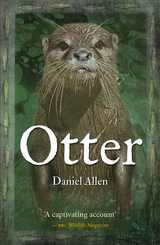
Although rarely seen in the wild, the otter is admired for its playful character and graceful aquatic agility, which were established in the popular imagination through books like Tarka the Otter and Ring of Bright Water. This, however, is just a very small part of their story—throughout history the otter has also been widely hunted for its fur and flesh. In Otter, human geographer Daniel Allen reveals how the animal’s identity has been shaped by this variety of human interactions.
As Allen explains, otters, while feared by some communities, were hunted to near extinction by others—killed for their valuable pelts in the north Pacific and chased with hounds for sport in Britain. In contrast, Allen describes how Native Americans revered the otter and how indigenous fishermen in parts of Asia trained otters to assist them. Sadly, now all thirteen species of otter are considered threatened, and their survival is by no means certain.
In this wide-ranging look at the otter, Allen incorporates anecdotes from folklore, sports, popular literature, media, and conservation studies in order to unravel this complicated cultural history. Otter isa lively book that offers a new way of thinking about this admired and endangered animal.
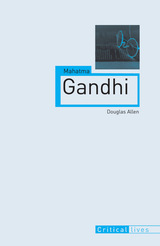

Food preservation rests in a simple problem: food tends to come in concentrated periods of abundance and then quickly spoil. Today we might pump it full of preservatives or throw it in the freezer, but for most of our time eating the things that the earth provides, we haven’t had these luxuries. As Allen shows, that’s been a wonderful limitation: our ancestors, knowing next to nothing about organic chemistry, found consistent techniques not only to preserve the foods they grew but to alter them—to delicious effects. Wine is more than old grape juice, cheese more than spoiled milk. Allen details how these transformations resulted in new flavors, textures, and, ultimately, new ways of defining the tastes and culture of a community, which passed down its knowledge from generation to generation. Exploring the history and science of preservation, he examines all the major techniques—from drying to smoking to salting to canning to fermentation—reveling in the cornucopia of different foods they have produced. Allaying the fears of the squeamish, he serves up easy-to-do historic and modern recipes that will help any home cook participate in one of culinary history’s most hallowed traditions.

Salsa and guacamole wouldn’t be the same without cilantro, and you can’t make pizza without oregano or a mojito without mint. You can use peppermint to settle an upset stomach, ease arthritis pain with stinging nettle, and heal burns and wounds with aloe vera. And then there is cannabis—perhaps the most notorious and divisive herb of all. Despite the fact that herbs are often little more than weeds, cultures around the globe have found hundreds of uses for them, employing them in everything from ancient medicines to savory dishes. While much has been written on cooking and healing with herbs, little has been told about the history of the plants themselves and the incredible journeys they have made.

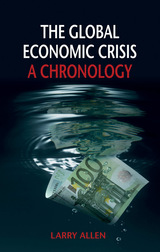
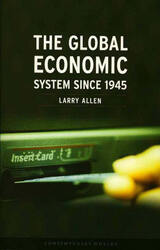
The Global Economic System since 1945 does not shun economic theory, but rather uses it as a tool to reassess recent world economic history. Allen describes how, starting at the end of World War Two, powerful corporations lobbied governments in an effort to reduce the perceived constraints of regulation. In the past twenty-five years these voices have grown increasingly influential, as governments worldwide adopted free-market policies, reduced economic regulation, and promoted the virtues of free-market capitalism.
The Global Economic System since 1945 presents a fresh and wide-ranging synthesis of economic history and theory that will be valuable to both scholars and curious participants in today's global economy.


Allmer’s analyses of these events and their influence on both well-known and less familiar images give new insights into Magritte’s art. The book will appeal to those who wish to know more about Magritte’s life and work, as well as to the wide audience for surrealism.
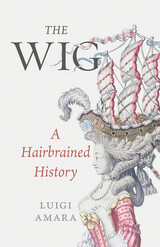

Amato examines the common facts and occurrences in lives from all spheres, whether of a pauper or a noble, a criminal or state official, or a lunatic or a philosopher. Such facts include basic aspects of human existence, such as play, work, conflict, and healing, as well the logistics of survival, such as housing, clothing, cleaning, cooking, animals, plants, and machines. Tracing core historical developments like efficiency of production and greater mobility, Amato shows how we became modern in everyday ways. He explores how, paradoxically, commerce, technology, design, industrialization, nationalism, and democratization—which have so undercut traditional culture and have homogenized, centralized, and secularized masses of people—have also profoundly transformed daily life, affording citizens with materially improved lives, individual rights, and productive and rewarding expectations.
A wide-ranging account of lives throughout history, this book gives us new insights into our own condition, showing us how extraordinary the ordinary can be.

In Berries, Heather Arndt Anderson uncovers the offbeat stories of how humans came to love these tiny, bewildering fruits. Readers meet the inventor of thornless brambles; learn ancient fables and berry-lore; discover berries’ uses in both poisonous witches’ brews and modern superfood health crazes. Featuring a selection of historic and original recipes for berry lovers to try, this is a witty and lushly illustrated ramble through the curious history of our favorite fruits, from interlopers like strawberries (not true berries) to the real deal: tomatoes.

Anderson tells the story of the spicy berry’s rise to prominence, showing that it was cultivated and venerated by the ancient people of Mesoamerica for millennia before Spanish explorers brought it back to Europe. She traces the chilli’s spread along trading routes to every corner of the globe, and she explores the many important spiritual and cultural links that we have formed with it, from its use as an aphrodisiac to, in more modern times, an especially masochistic kind of eating competition. Ultimately, she uses the chili to tell a larger story of global trade, showing how the spread of spicy cuisine can tell us much about the global exchange—and sometimes domination—of culture. Mixing history, botany, and cooking, this entertaining read will give your bookshelf just the kick it needs.

Richard Anderson looks at Russia’s complex relationship to global architectural culture, exploring the country’s central presence in the Rationalism and Constructivism movements of the 1920s, as well as its role as a key protagonist during the Cold War. Looking deeply at Soviet Russia, he brings the relationship between architecture and socialism into focus through detailed case studies that situate buildings and architectural concepts within the socialist milieu of Soviet society. He tracks the way Russian architectural institutions departed from the course of modernism being developed in capitalist countries, and he reappraises the architecture of the Stalin era and the final decades of the USSR. Finally, he traces the influence of Soviet conventions on contemporary Russian architecture—which is now a more heterogeneous mix of approaches and styles— and how it made a lasting and little-known impact on territories extending from the Middle East, to Central Asia, and into China.
A bold new assessment of Russia’s architectural legacy and contemporary contributions, this book is a fascinating exploration of a tumultuous place—and the creativity that has come from it.
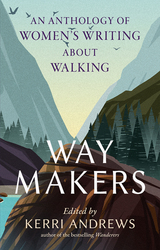
The follow-up to the celebrated Wanderers, Kerri Andrews’s Way Makers is the first anthology of women’s writing about walking. Moving from Elizabeth Carter’s correspondence with Catherine Talbot in the eighteenth century through to Merryn Glover in the present day, and across poetry, letters, diaries, novels, and more, this anthology traces a long tradition of women’s walking literature. Walking is, for the women included in this anthology, a source of creativity and comfort; it is a means of expressing grief, longing, and desire. It is also a complicated activity: it represents freedom but is also sometimes tinged with danger and fear. What cannot be denied any longer is that walking was, and continues to be, an activity full of physical and emotional significance for women: this anthology is a testament to the rich literary heritage created by generations of women walker-writers over the centuries.

“A wild portrayal of the passion and spirit of female walkers and the deep sense of ‘knowing’ that they found along the path.”—Raynor Winn, author of The Salt Path
“I opened this book and instantly found that I was part of a conversation I didn't want to leave. A dazzling, inspirational history.”—Helen Mort, author of No Map Could Show Them
This is a book about ten women over the past three hundred years who have found walking essential to their sense of themselves, as people and as writers. Wanderers traces their footsteps, from eighteenth-century parson’s daughter Elizabeth Carter—who desired nothing more than to be taken for a vagabond in the wilds of southern England—to modern walker-writers such as Nan Shepherd and Cheryl Strayed. For each, walking was integral, whether it was rambling for miles across the Highlands, like Sarah Stoddart Hazlitt, or pacing novels into being, as Virginia Woolf did around Bloomsbury. Offering a beguiling view of the history of walking, Wanderers guides us through the different ways of seeing—of being—articulated by these ten pathfinding women.

A Sweet View explores how writers and artists in the nineteenth century shaped the English countryside as a partly imaginary idyll, with its distinctive repertoire of idealized scenery: the village green, the old country churchyard, hedgerows and cottages, scenic variety concentrated into a small compass, snugness and comfort. The book draws on a very wide range of contemporary sources and features some of the key makers of the “South Country” rural idyll, including Samuel Palmer, Myles Birket Foster, and Richard Jefferies. The legacy of the idyll still influences popular perceptions of the essential character of a certain kind of English landscape—indeed for Henry James that imagery constituted “the very essence of England” itself. As A Sweet View makes clear, the countryside idyll forged over a century ago is still with us today.
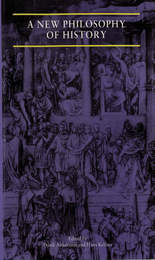
The range of approaches found in A New Philosophy of History ensures that this book will establish itself as required reading not only for historians, but for everyone interested in literary theory, philosophy, or cultural studies.
This volume presents essays by Hans Kellner, Nancy F. Partner, Richard T. Vann, Arthur C. Danto, Linda Orr, Philippe Carrard, Ann Rigney, Allan Megill, Robert Berkhofer, Stephen Bann, and Frank Ankersmit.
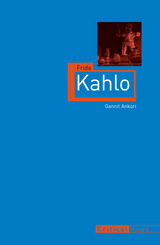

Ankori comprehensively traces the full history and development of Palestinian art, from its roots in folk art and traditional Christian and Islamic painting to the predominance of nationalistic themes and diverse media used today. Drawing on over a decade of extensive research, studio visits, and interviews, Ankori explores the vast oeuvre of prominent contemporary Palestinian artists, navigating between the personal and biographical dimensions of specific artworks and the symbolic meanings embedded within them. She provides detailed interpretations of many works and considers the complex historical, geographical, political, and cultural contexts in which the art was created. Questions of gender, exile, colonialism, postcolonialism, and hybridity are integral to Ankori's investigation as she probes the influence and thematic dominance of issues such as rootedness and displacement in Palestinian art.
Palestinian Art is a fascinating introduction to a virtually unknown visual culture that has been subsumed under the torrent of current political turmoil. A groundbreaking and essential work of art scholarship, Palestinian Art illuminates new and unique facets of the Palestinian cultural identity.

J.-K. Huysmans (1848–1907) is often hailed as a forerunner of modernist letters. While his novel À rebours / Against Nature remains infamous for its reclusive protagonist retreating into a realm of artifice and dreams, Huysmans’s literary contributions are far-reaching. Ruth Antosh explores Huysmans’s life and work, illustrating how both reflect an uneasy era of profound social and artistic change. In this context, Huysmans’s correspondence, early fiction, art criticism, and surrealist novel En rade / Stranded demand greater critical attention. Antosh argues that Huysmans’s life should be understood as an unwavering quest for spiritual and aesthetic fulfillment.
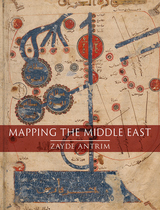
Organized chronologically, Mapping the Middle East addresses the medieval “Realm of Islam;” the sixteenth- to eighteenth-century Ottoman Empire; French and British colonialism through World War I; nationalism in modern Turkey, Iran, and Israel/Palestine; and alternative geographies in the twentieth and twenty-first centuries. Vivid color illustrations throughout allow readers to compare the maps themselves with Antrim’s analysis. Much more than a conventional history of cartography, Mapping the Middle East is an incisive critique of the changing relationship between maps and belonging in a dynamic world region over the past thousand years.
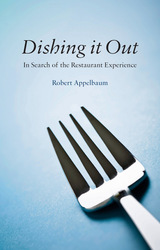
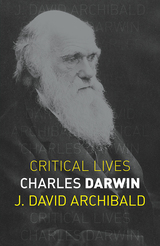
In 1859 Charles Darwin published On the Origin of Species. With this bedrock of biology books, Darwin carved a new origin-story for all life: evolution rather than creation. But this single book is not the whole story. In this new biography, J. David Archibald describes and analyzes Darwin’s prodigious body of work and complex relationships with colleagues, as well as his equally productive home life—he lived with his wife and seven surviving children in the bustling environs of Down House, south of London. There, among his family and friends, Darwin continued to experiment and write many more books on orchids, sex, emotions, and earthworms until his death in 1882, when he was honored with burial at Westminster Abbey. This is a fresh, up-to-date account of the life and work of a most remarkable man.

In this book, Patrick Armstrong illuminates the many facets of Wallace’s long life, which extended from 1823 until the eve of World War I. He shows Wallace to be, in many ways, a more interesting character than his colleague and friend, evolutionary scientist Charles Darwin. Taking a psychological approach, this compact yet comprehensive biography gives insight into a man who was frequently plagued with misfortune; legal problems, inability to obtain full-time employment, and relationship troubles all vexed him. Armstrong unlocks the life of a restless traveler who, although raised with “a very ordinary” education, would go on to become one of the most influential, extraordinary scientists of his time.

Brilliant, hard-working, and immensely productive, the naturalist Richard Owen was a great ambassador for science and played an outsized role in shaping London’s Natural History Museum. Still, Owen was a provocative bully, accused of plagiarism, and the only man Charles Darwin claimed to hate since Owen staunchly opposed his ideas about natural selection despite sharing similar views himself. This biography gives an account of Owen’s life and work and offers some speculation about the reasons behind his controversial behavior and strained relationships.
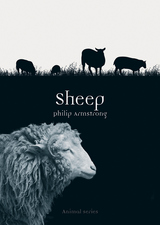
As Armstrong shows, humans have treated sheep with awe, cruelty or disdain for many thousands of years. Our exploitation of them for milk, meat, and wool—but also for artistic and cultural purposes—has shaped both our history and theirs. Despite all that we owe them we have often dismissed sheep as the least witted and least interesting of mammals: to be accused of “sheepishness” or behaving “like a flock of sheep” is to be denigrated for lack of courage, individuality, or will. Yet, as this book demonstrates, sheep actually possess highly sophisticated social skills and emotional intelligence. Above all, Sheep demonstrates that sometimes the most mundane animals turn out to be the most surprising.

In this fiery cultural history, Martin Arnold asks how these unifying impulses can be explained. Are they owed to our need to impose order on chaos in the form of a dragon-slaying hero? Is it our terror of nature, writ large, unleashed in its most destructive form? Or is the dragon nothing less than an expression of that greatest and most disturbing mystery of all: our mortality? Tracing the history of ideas about dragons from the earliest of times to Game of Thrones, Arnold explores exactly what it might be that calls forth such creatures from the darkest corners of our collective imagination.
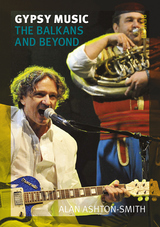
In Gypsy Music, Alan Ashton-Smith explores why this music has such wide appeal, surveying the varied styles that are considered to be gypsy music and asking what links them together. The book begins in the Balkans, home to the world’s largest Romani populations and a major site of gypsy music production. But just as the traditionally nomadic Roma have traveled globally, so has their music. Gypsy music styles have roots and associations outside of the Balkans, including Russian Romani guitar music, flamenco and gypsy jazz, and the more recent forms of gypsy punk and Balkan beats.
Covering the thirteenth century to the present day, and with a geographical scope that ranges from rural Romania to New York by way of Budapest, Moscow, and Andalusia, Gypsy Music reveals the remarkable diversity of this exuberant art form.

Cosplay, born from the fusion of “costume” and “play,” transcends mere dress-up by transforming enthusiasts of TV shows, movies, books, or video games into living embodiments of their cherished characters. This book is a close exploration of the vibrant world of cosplay, showing what makes it so captivating for so many. Vivian Asimos frames cosplay as an enactment and embodiment of mythology, revealing its inherent complexity, and in so doing, provides valuable insight into cosplayers’ experiences.
Exploring cosplay performances, the skills involved, and its community, she shows how cosplayers build a strong connection to the characters and stories they treasure, and ultimately how they are constructing their own identities.
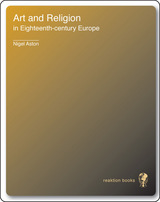
The sustained popularity of religious art in the face of competition from increasingly prevalent secular artworks lies at the heart of this study. Religious art staked out new spaces of display in state institutions, palaces, and private collections, the book shows, as well as taking advantage of patronage from monarchs such as Louis XIV and George III, who funded religious art in an effort to enhance their monarchial prestige. Aston also explores the motivations and exhibition practices of private collectors and analyzes changing Catholic and Protestant attitudes toward art. The book also examines purchases made by corporate patrons such as charity hospitals and religious confraternities and considers what this reveals about the changing religiosity of the era as well.

Plato is a key figure from the beginnings of Western philosophy, yet the impact of his lived experience on his thought has rarely been explored. Born during a war that would lead to Athens’ decline, Plato lived in turbulent times. Carol Atack explores how Plato’s life in Athens influenced his thought, how he developed the Socratic dialogue into a powerful philosophical tool, and how he used the institutions of Athenian society to create a compelling imaginative world. Accessibly written, this book shows how Plato made Athens the place where diverse ideas were integrated into a new way of approaching the big questions about our lives, then and now.

An array of famous and lesser-known writers, booksellers, and film-makers slip in and out of Sinclair’s annotations, as do memories and remnants of the East End’s criminal mobs and physical landmarks as diverse as the Thames barrier and Karl Marx’s grave in Archway cemetery. All of it is documented in Atkins’s striking, atmospheric photographs and Sinclair’s impressionistic prose that marries psychology with geography. Cued by the title, readers will follow the Thames as it flows silently through the photographic and textual narrative, traversing a city that is always fluid, full at once of continuities and surprises.

"Atkinson has put a fantastically exhaustive amount of work into this book for all of us global guitar nerds to enjoy. It’s so much fun to dive into it full immersion, and glean everything from details on iconic artist guitars to strange inventions from creatives on the fringe!"—Jennifer Batten, guitarist (Michael Jackson, Jeff Beck)
“A great resource for all guitar players, tinkerers, and enthusiasts. Atkinson’s well-researched book provides essential and fascinating facts of this unique instrument’s development over the course of more than a century.”—Paul Brett, rock guitarist, journalist, guitar designer
“Atkinson has dug deep into the history of the electric guitar to create a detailed view of the ways in which makers and musicians have tried—and in many cases succeeded—to move its design forward. This engaging new book will be required reading for anyone interested in the development of one of the most popular and revolutionary instruments ever created.”—Tony Bacon, guitar historian and author
An in-depth look at the invention and development of the electric guitar, this book explores how the electric guitar’s design has changed and what its design over the years has meant for its sound. A heavily illustrated history with amps turned up to eleven, Amplified celebrates this beloved instrument and reveals how it has evolved through the experiments of amateur makers and part-time tinkerers. Digging deep into archives and featuring new interviews with makers and players, it will find admirers in all shredders, luthiers, and fans of electric sound.

The pixelated rectangle we spend most of our day staring at in silence is not the television as many long feared, but the computer—the ubiquitous portal of work and personal lives. At this point, the computer is almost so common we don’t notice it in our view. It’s difficult to envision that not that long ago it was a gigantic, room-sized structure only to be accessed by a few inspiring as much awe and respect as fear and mystery. Now that the machine has decreased in size and increased in popular use, the computer has become a prosaic appliance, little-more noted than a toaster. These dramatic changes, from the daunting to the ordinary, are captured in Computer by design historian Paul Atkinson.
Here, Atkinson chronicles the changes in physical design of the computer and shows how these changes in design are related to changes in popular attitude. Atkinson is fascinated by how the computer has been represented and promoted in advertising. For example, in contrast to ads from the 1970s and ’80s, today’s PC is very PC—genderless, and largely status free. Computer also considers the role of the computer as a cultural touchstone, as evidenced by its regular appearance in popular culture, including the iconography of the space age, HAL from 2001: A Space Odyssey, James Bond’s gadgetry, and Stars War and Star Trek.
Computer covers many issues ignored by other histories of computing, which have focused on technology and the economics involved in their production, but rarely on the role of fashion in the physical design and promotion of computers and their general reception. The book will appeal to professionals and students of design and technology as well as those interested in the history of computers and how they have shaped—and been shaped by—our lives.
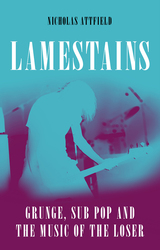
This book is a critical history of Sub Pop Records, the Seattle independent rock label that launched the careers of countless influential grunge bands in the late 1980s and early 1990s. It focuses in particular on the languages and personas of the “loser,” a term that encompassed the label’s founders and personnel, its flagship bands (including Mudhoney, TAD, and Nirvana), and the avid vinyl-collecting fans it rapidly amassed. The loser became (and remains) the key Sub Pop identity, but it also grounded the label in the overt masculinity, sexism, and transgression of rock history. Rather than the usual reading of grunge as an alternative to the mainstream, Lamestains reveals a more equivocal and complicated relationship that Sub Pop exploited with great success.
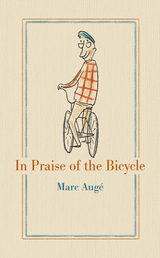
Part memoir, part manifesto, Augé’s book celebrates cycling as a way of reconnecting with the places in which we live, and, ultimately, as a necessary alternative to our disconnected world.


Designing Modern Germany reveals how German attitudes toward national identity, modernity and technology are crucial to understanding German design. Aynsley traces the historical development of German design, beginning in the 1870s with the first dedicated Arts and Crafts schools and stretching through to the famous institutions of the Bauhaus and the Ulm Hochschule für Gestaltung. He analyses the works of leading figures such as Peter Behrens and Hannes Meyer, through to Ingo Maurer and Jil Sander, and many others in design specialties including graphics, industrial and furniture design, fashion and architecture. He also offers the first consideration of the contrasting design traditions of East and West Germany between 1949 and 1989. Whether examining the pre-First World War department store, the National Socialist fashion system or East Germany’s official design culture, Designing Modern Germany reveals that German design significantly affected citizens’ daily lives.
An essential read for designers and scholars of German design and history, Designing Modern Germany is a key text for understanding Germany’s major contribution to twentieth-century design.
READERS
Browse our collection.
PUBLISHERS
See BiblioVault's publisher services.
STUDENT SERVICES
Files for college accessibility offices.
UChicago Accessibility Resources
home | accessibility | search | about | contact us
BiblioVault ® 2001 - 2024
The University of Chicago Press









